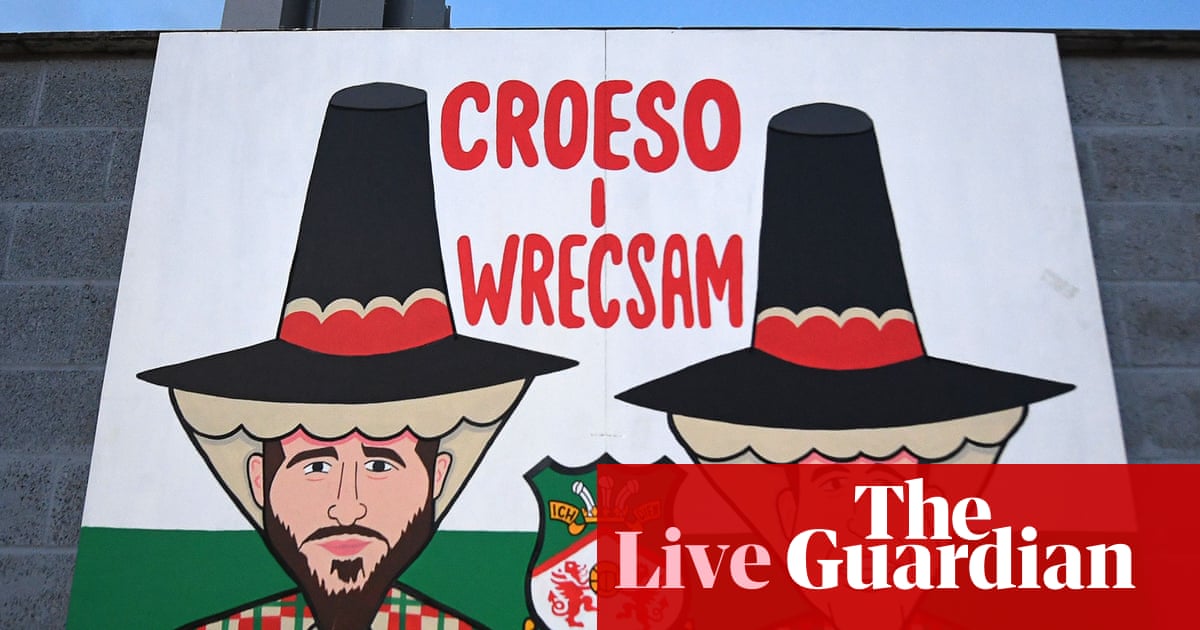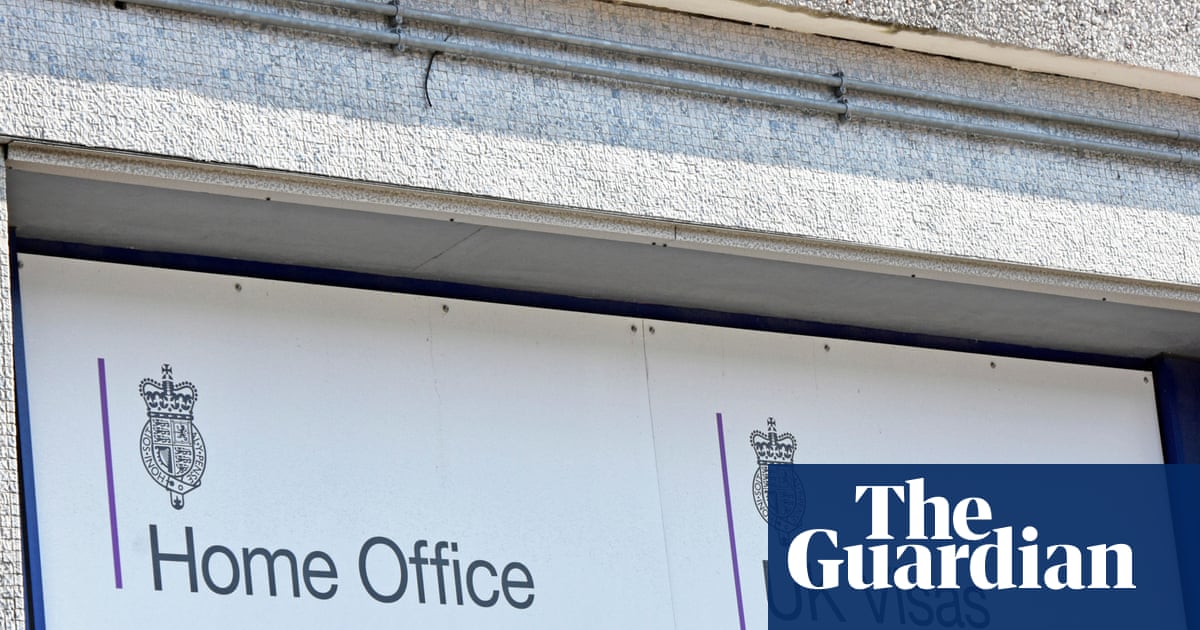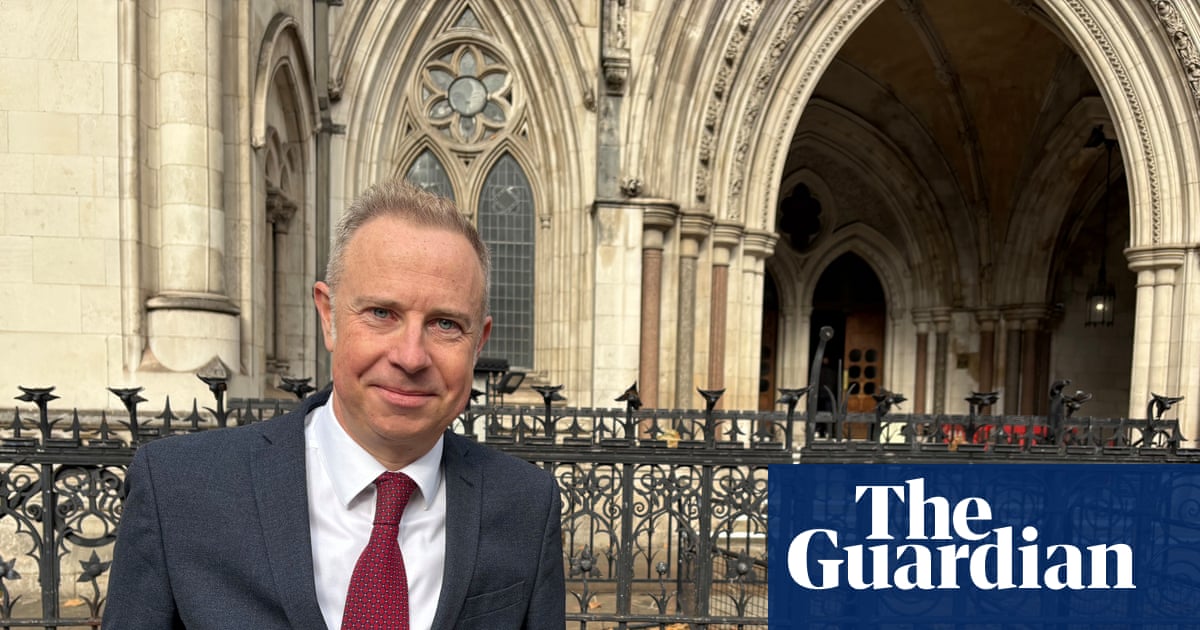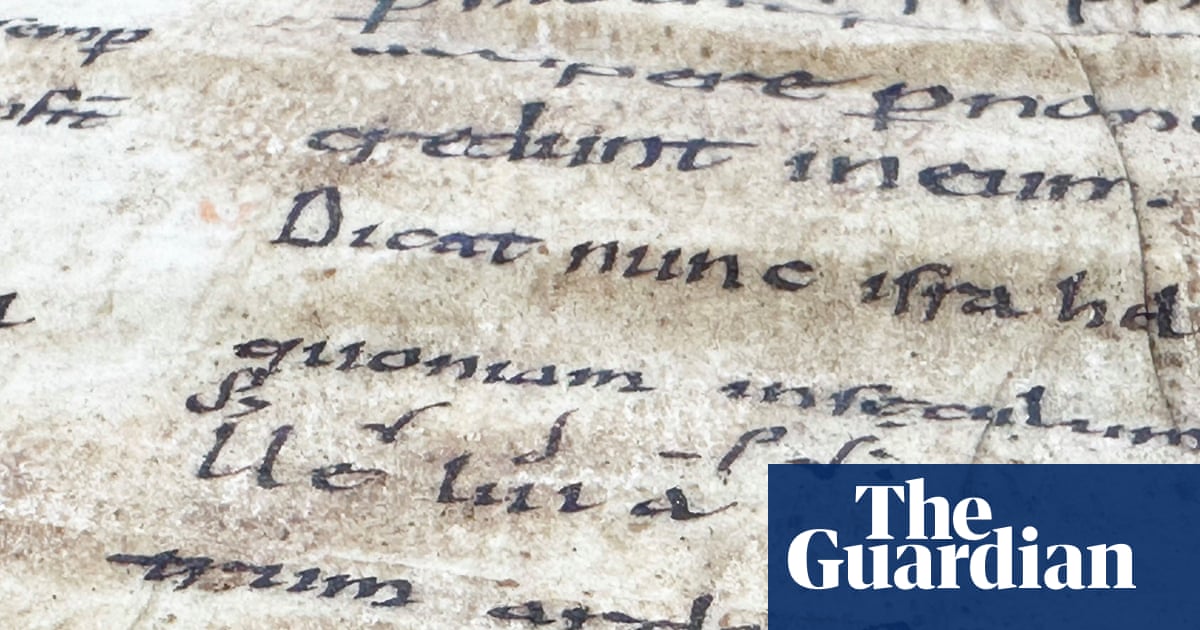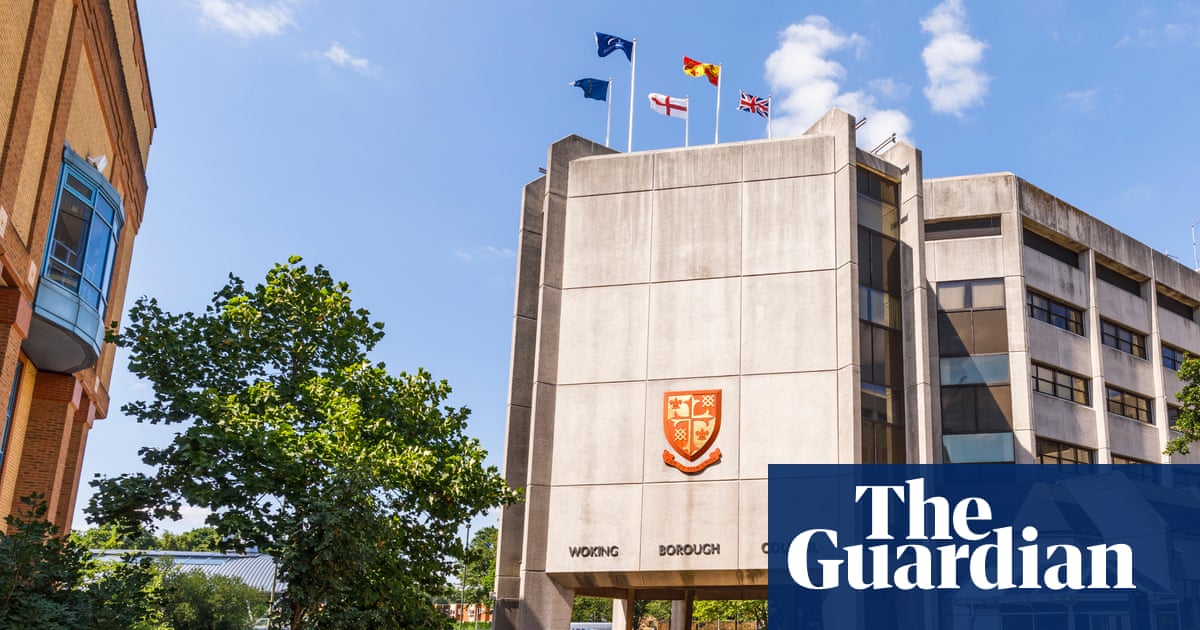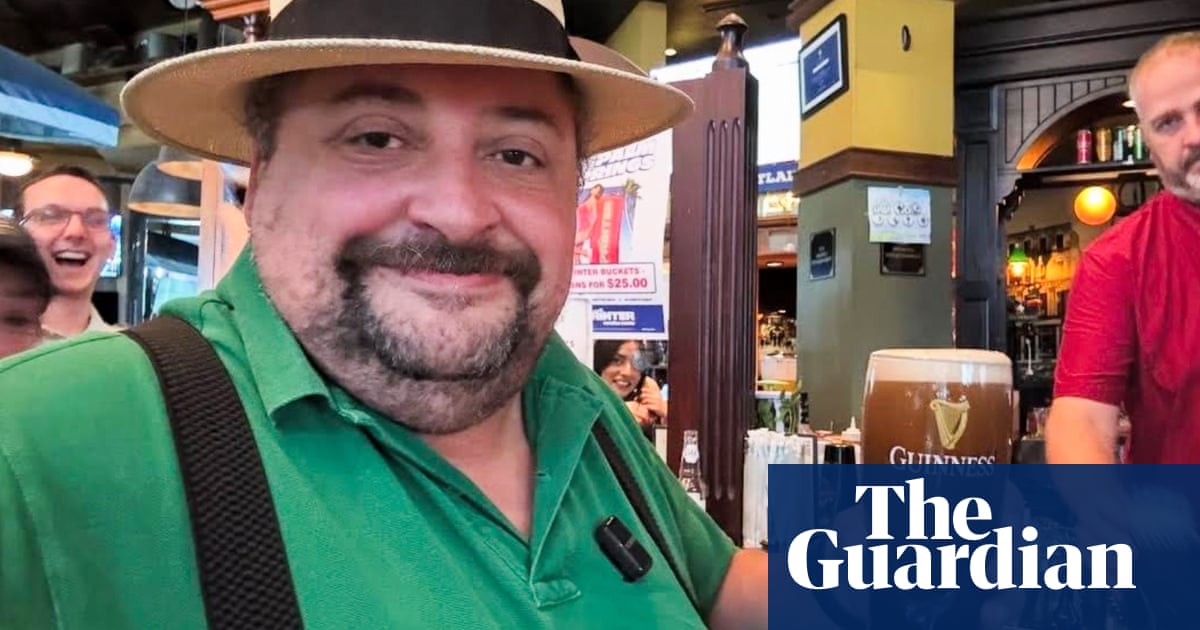With its large silver pouch, artistic label and delicate leaves, Dalreoch Scottish white tea might be expected to grace elegant cups with saucers, perhaps with a scone served on the side. Instead, it is nestled with an array of numbered polythene packets in a room just off a laboratory at the University of Aberdeen.
This is not an ordinary afternoon tea but evidence in a crime that science helped solve.
For Prof David Burslem, a plant scientist at the university, the silver pouch was highly suspicious. “It’s a very large packet – 250g – and tea growing in Scotland was at a very small scale,” he said.
Burslem spent more than two decades in academia before finding himself in the role of an expert witness, helping to crack an audacious fraud that took in top hotels, leading politicians, tea growers across Scotland – and swathes of the media.
At its heart was a tantalising idea: creating tea plantations in Scotland to produce premium brews. And Tam O’Braan – a tweed-wearing grower from Perthshire – was the man who wanted to turn the idea into an industry.
O’Braan, 55, burst on to the scene in the mid-2010s with his “Wee Tea” plantation in Perthshire. Outlets including the BBC sent teams to interview him and film leaves being picked from his bushes.
The attention encouraged would-be growers to get in touch. O’Braan was happy to help, selling them tea plants he said had been grown in Scotland and cultivated to withstand the harsh conditions, as well as offering growing advice. In media interviews he claimed tea could be “forced”, like rhubarb.
As the tea rush grew, more plantations sprang up as part of O’Braan’s “Tea Growers’ Association”, with articles running in local and national press, on the radio and on TV news. In 2015, Scotland’s then first minister, Nicola Sturgeon, attended the US launch of O’Braan’s tea at the five-star Lowell hotel on New York’s Upper East Side, alongside the Scottish actor Alan Cumming.
The same year I met O’Braan at the Dorchester hotel in London for an article on British tea. He was not only supplying tea to the hotel but had also helped to set up tea plants on its roof terrace – tea, the Dorchester told me at the time, that would also be incorporated into some of the hotel’s offerings.
Yet in the weeks that followed my article, doubts crept in. I realised – too late – I could find no evidence of the “Salon de Thé” award that numerous outlets, including the Times and the Guardian, had reported O’Braan’s plantation had won.
Was it made up? I could not prove it, and the relationship with the hotels and other growers was real enough, offering credibility. The news cycle moved on, as did I. But in Scotland, growers also had nagging concerns.
Richard Ross, a drinks writer, bought about 500 young tea plants from O’Braan, eager to make use of some land in Perthshire. “He talked a good game; talked a lot about the specifics of what he’d been doing and his own background,” Ross said. “He seemed like a credible individual, somebody I could do business with.”
Ross planted his tea in the autumn of 2015 and early the next year gave O’Braan permission to show a French news organisation around his plantation while he was away.
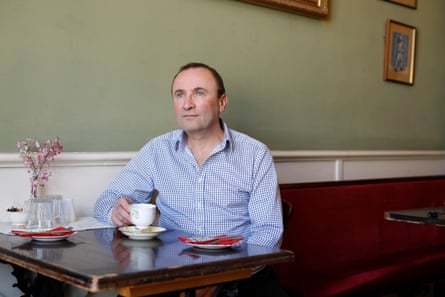
Three weeks later he found O’Braan on the doorstep proffering an apology and a huge tub filled with three kilograms of a fine, processed tea. During filming for the media, O’Braan said, his team had got carried away and picked all the leaves from Ross’s plants. The tub, he said, was the result.
“I look at the bucket and think: ‘That’s a lot of tea,’” Ross said. It was February and his plants had yet to have their first sprouting of new leaf.
“I took a small amount so that I could taste some myself and maybe show off to my family that actually I had my first Scottish tea that I’d managed to grow myself,” he said. “But in the back of my mind I was thinking this just doesn’t ring true.”
Over time, many growers, including Ross, were also finding their plants failed to thrive, a situation Ross found very confusing.
“Here was a man who we saw as this expert in tea. He was sort of acknowledged as such in [the] media and by people who are buying the tea for these big restaurants and hotels. So we thought, clearly if it’s not working for me then it’s something I’m doing,” he said.
With concerns growing and O’Braan becoming more elusive and difficult to deal with, the tea growers regrouped as “Tea Scotland” in an attempt to distance themselves from O’Braan and protect their reputation.
A couple of years later, Ross found himself in Edinburgh. And having previously heard that the prestigious Balmoral hotel was offering a tea menu featuring an array of single-estate Scottish teas, he decided to visit. But when he saw the tea list, clearly linked to O’Braan, he realised the descriptions referred to plantations owned by members of Tea Scotland – none of which were yet selling their tea.
Outraged, the tea growers contacted the authorities. Two local authorities also raised concerns after being unable to ascertain where the tea leaves grown by O’Braan were being turned into a finished product.
The case eventually landed on the desk of Stuart Wilson, a former DI who, in a previous life, had solved murders but was now leading the investigation for Food Standards Scotland.
Wilson and his colleagues found Tam O’Braan was just one of the aliases for a man also known as Thomas O’Brien or Thomas Robinson.
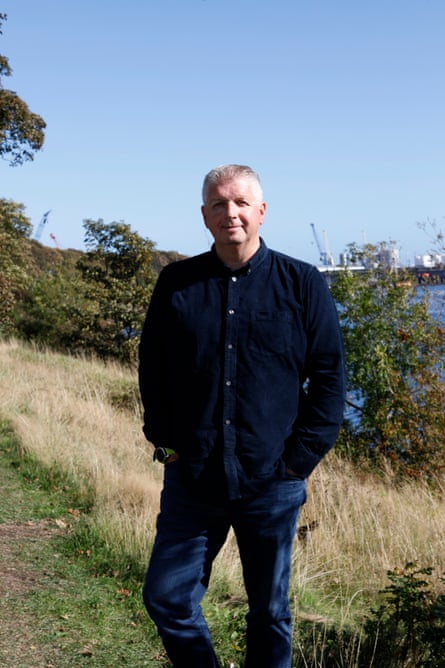
Wilson’s team found O’Braan had been buying tea from wholesalers in Oxford and London, and that some of the transactions could be linked to dates and quantities of deals between O’Braan and the Balmoral.
Further evidence came from an Italian tea grower who had turned up in Scotland looking for O’Braan with a large unpaid bill for plants. The plants that had struggled to survive in Scotland, it emerged, had come straight from his nursery on the slopes of Lake Maggiore and were being sold by O’Braan at a hugely inflated price.
Tea experts also provided evidence, revealing it would take several years before a plant growing in Scotland would produce leaves suitable for making a brew.
And the more Wilson’s team dug, the more O’Braan’s stories crumbled: contrary to O’Braan’s claims, they could find no evidence he had been to university in Edinburgh, served in the army, worked in bomb disposal, invented the bag for life.
As for those prizes his tea was supposed to have won? “The bottom line was there was no evidence to substantiate that any of these awards that he’d claimed were accurate,” Wilson said.
Yet it remained important to show that the tea O’Braan was selling was not of Scottish origin. “There was always the worry in the back of my mind that there was some massive plantation somewhere that we didn’t know about,” Wilson said.
After checking Land Registry records and finding no signs of a further plantation linked to O’Braan, Wilson turned to Burselm.
Working with the Scottish tea growers, Burselm had already begun pilot studies to explore the provenance of different teas. Now he applied the method to samples collected under the eye of Wilson and his team.
At its core, the approach involved analysing tea samples for concentrations of 10 different elements including cadmium, arsenic and nickel.
Crucially, as Burselm noted, the concentrations of these elements are influenced by the underlying geology of the ground on which the plants are grown rather than biological processes or fertilisers. The varying concentrations provide a sort of fingerprint that reflects the plant’s location.
Burselm tested processed tea collected by Food Standards Scotland from a host of known Scottish plantations and samples from those overseas. He also tested “mystery” samples provided by Wilson and colleagues – later revealed to be teas sold by O’Braan.
The results showed samples from the Scottish plantations had distinct “fingerprints”. “We were able to show clear differences between tea growers that are separated by a few tens of kilometres here in Scotland,” Burselm said.
But the samples from Scottish plantations were more similar to one other than to those from plantations in other parts of the world. Most of the mystery samples, however, had “fingerprints” that clustered with those of teas grown overseas.

Burselm’s work helped to convict O’Braan. In May this year, he was found guilty on two counts of fraud totalling nearly £600,000, and a month later he was sentenced to three and a half years in jail.
For Burslem, the experience was a world away from everyday research. “When I embarked on [this work], I didn’t imagine it was going to go in this direction,” he said. “[Now] every time I drink tea I wonder where it comes from.”
The conviction did not signal the end of Tea Scotland. While Ross is no longer growing tea, others are going strong.
Islay Henderson is one such grower, with her 7,000 or so tea plants doing well on the west coast of Scotland. “I‘ve got about seven different varieties now, maybe more, and I’m trying some cuttings as well from my own hardy plants,” she said, with the plants taking about seven years to produce an optimum yield.
The output is still small in scale: Henderson said this year she had processed about 45kg of fresh leaf grown by members of Tea Scotland, resulting in about 12kg of processed, multi-estate tea. That was about enough for 4,000 pots of the brew, Henderson said. And she has also begun producing small batches of her own single-estate tea.
While Ross insists it is the hard work of growers and the help of the Italian nursery owner that has made Scottish Tea a reality, Henderson admits it was O’Braan who put the idea in her head.
“I think, ironically, we may not have done it with him,” she said.
A Scottish tea mystery is a three-part investigation by Science Weekly, available now wherever you get your podcasts.

 6 hours ago
7
6 hours ago
7
